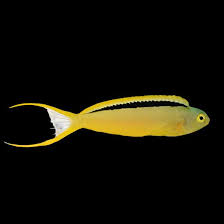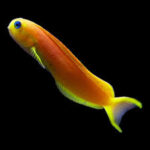Dragons in Chinese Folklore: Mythical Tales and Cultural Significance

Dragons hold a place of great importance in Chinese culture, embodying power, wisdom, and good fortune. These mythical creatures are not only symbols of imperial authority but also deeply woven into the fabric of Chinese folklore. The dragon is revered as a celestial being, a symbol of harmony between heaven and earth, and a key figure in many ancient legends. From towering mountains to the deep waters of rivers and seas, the dragon has been depicted in a myriad of forms, each embodying distinct characteristics and playing vital roles in the stories passed down through generations.
In Chinese folklore, dragons are not the malevolent creatures often seen in Western mythology. Instead, they are seen as benevolent and divine beings, capable of controlling the elements of nature, bestowing blessings upon the people, and protecting the nation. This article will explore the role of dragons in Chinese folklore, delving into the fascinating tales and legends surrounding them. Through these stories, we will uncover the cultural significance of dragons and their lasting impact on Chinese tradition and beliefs.
The Origins of the Chinese Dragon
The Chinese dragon, known as “Lóng” (龙/龍), is one of the most iconic symbols in Chinese mythology and art. Unlike the winged dragons of Western mythology, the Chinese dragon is traditionally depicted as a long, serpentine creature with antler-like horns, a horse-like head, and the claws of an eagle. It is said to have the ability to fly through the sky, swim in the oceans, and even shapeshift into other forms. The origins of the Chinese dragon can be traced back thousands of years, with its earliest representations appearing during the Neolithic period in China.
Ancient Chinese civilizations, including the Shang Dynasty (16th to 11th centuries BCE), depicted dragons as symbols of power and protection. They were considered to be messengers of the gods, capable of bringing rain to nourish the crops, thus ensuring prosperity and good harvests. This association between the dragon and water—particularly the power to control floods, rivers, and rain—became central to its mythological significance.
Dragons and the Elements in Chinese Folklore
In Chinese mythology, dragons are often linked to the elements of nature, particularly water, fire, and earth. They are believed to control the forces of nature, including the flow of rivers, the formation of clouds, and the distribution of rain. This connection to nature is reflective of the belief in the harmony between humans and the natural world.
- Water Dragons: The most well-known dragons in Chinese folklore are water dragons. These dragons are associated with rivers, seas, and lakes, and are believed to possess the power to control rainfall and storms. Water dragons are often seen as benevolent beings who ensure the prosperity of the land by bringing much-needed water to crops and fields. In many legends, the dragon is seen as a protector of the people, preventing droughts and natural disasters by regulating the flow of water.
- Fire Dragons: Another type of dragon in Chinese mythology is the fire dragon. These dragons are associated with volcanic mountains and are believed to have the power to control fire and heat. Fire dragons are often depicted as fierce and energetic beings who possess the ability to breathe fire and cause destruction. However, they are also seen as protectors who use their fiery powers to defend against evil forces.
- Earth Dragons: Earth dragons, though less common in folklore, are believed to inhabit mountains and underground caves. They are seen as guardians of the earth’s wealth, including minerals, gemstones, and precious metals. Earth dragons are often depicted as powerful, wise beings who have the ability to shape the land and influence the growth of plants and crops.
Famous Dragon Legends in Chinese Folklore
Chinese folklore is rich with stories about dragons, many of which involve the dragon’s role in shaping the world, guiding heroes, or protecting the people. Below are some of the most famous dragon legends from Chinese folklore.
1. The Legend of the Dragon Gate (龙门)
One of the most well-known dragon legends in Chinese folklore is the story of the “Dragon Gate,” which is associated with the Yellow River. According to the legend, there was a massive waterfall on the Yellow River known as the Dragon Gate Waterfall. The story goes that a carp, determined to leap over the waterfall, swam upstream for a hundred years, struggling against the strong current. After many years of persistence, the carp succeeded in leaping over the waterfall, and as a reward, it was transformed into a mighty dragon.
The Dragon Gate legend is often seen as a symbol of perseverance and determination. It teaches the moral lesson that through hard work and perseverance, one can overcome obstacles and achieve greatness. The transformation of the carp into a dragon also symbolizes the idea of spiritual and physical transformation.
2. The Dragon and the Emperor (皇帝与龙)
Dragons are closely associated with Chinese emperors, who were often referred to as the “Sons of Heaven.” In ancient China, the dragon was the symbol of imperial authority and power. According to folklore, the first emperor of China, Emperor Huangdi, was said to have been guided by a dragon when he ascended to the throne. It is believed that the dragon appeared to him in a vision, offering him wisdom and guidance for ruling the nation.
In Chinese tradition, the emperor’s throne was often referred to as the “Dragon Throne,” and the emperor’s robes were embroidered with dragon motifs. The emperor’s association with the dragon symbolized his divine right to rule and his ability to maintain harmony between the heavens and the earth.
3. The Dragon and the Phoenix (龙凤)
In Chinese folklore, the dragon and the phoenix (Fènghuáng, 凤凰) are often paired together as symbols of harmony and balance. The dragon represents masculinity, strength, and power, while the phoenix represents femininity, beauty, and grace. Together, they embody the concept of yin and yang, the balance of opposites.
The legend of the dragon and phoenix is often associated with marriage and the union of opposites. In some versions of the tale, the dragon and phoenix are said to be destined to be together, representing the ideal balance between male and female energies. This pairing has become a popular motif in Chinese art and symbolism, often used in wedding decorations and ceremonies to symbolize a harmonious and prosperous union.
4. The Dragon King (龙王)
In Chinese folklore, the Dragon King (Longwang) is a powerful deity who rules over the seas and oceans. The Dragon King is often depicted as a regal and benevolent figure who governs the waters and is responsible for bringing rain to the land. He is also believed to protect fishermen and sailors, ensuring their safety as they navigate the seas.
One of the most famous stories involving the Dragon King is the tale of a young fisherman who, after saving the Dragon King’s daughter from danger, is granted three wishes. The Dragon King grants the fisherman wealth, success, and prosperity in return for his kindness. This legend emphasizes themes of generosity, loyalty, and the rewards of good deeds.
5. The White Dragon Horse (白龙马)
The story of the White Dragon Horse is an integral part of the classic Chinese novel “Journey to the West” (西游记). The White Dragon Horse is a transformed dragon who serves as the steed for the monk Xuanzang (Tang Seng) on his journey to India to retrieve sacred Buddhist scriptures. Initially a dragon prince, the White Dragon Horse is transformed into a horse as a punishment for setting fire to his father’s palace. However, the dragon proves to be loyal and brave, playing a crucial role in the success of the journey.
This tale highlights themes of redemption, loyalty, and transformation. The White Dragon Horse’s journey from a rebellious dragon prince to a devoted companion symbolizes the idea of spiritual growth and the potential for positive change.
The Cultural Significance of Dragons in Chinese Folklore
Dragons have long been a central figure in Chinese folklore, representing not only divine power but also the interconnectedness of nature, humanity, and the cosmos. The stories of dragons in Chinese mythology reflect deep cultural values, including perseverance, loyalty, harmony, and the importance of maintaining balance between the natural and spiritual worlds.
In addition to their mythological significance, dragons have also influenced Chinese art, architecture, and daily life. They appear in traditional Chinese paintings, sculptures, and carvings, as well as in cultural festivals, such as the Dragon Boat Festival, which is celebrated annually in honor of the dragon and the poet Qu Yuan.
Conclusion
Dragons are a vital part of Chinese folklore, and their mythical presence in stories, legends, and cultural traditions continues to captivate people worldwide. As symbols of power, wisdom, and good fortune, dragons represent the harmonious relationship between humans and the forces of nature. Through the rich tapestry of dragon legends, we gain insight into the values and beliefs that have shaped Chinese culture for millennia. From the transformative power of the Dragon Gate to the divine authority of the Dragon King, these stories continue to inspire awe and admiration, ensuring the dragon’s enduring place in the heart of Chinese mythology.

